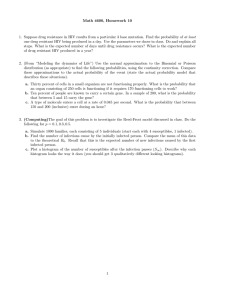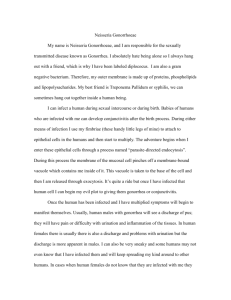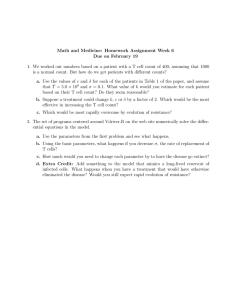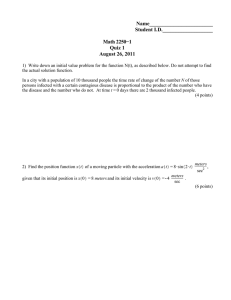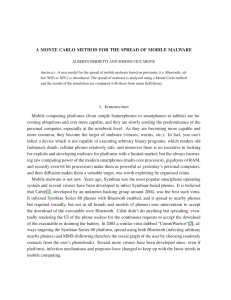Stochastic Processes Problem sheet 2
advertisement
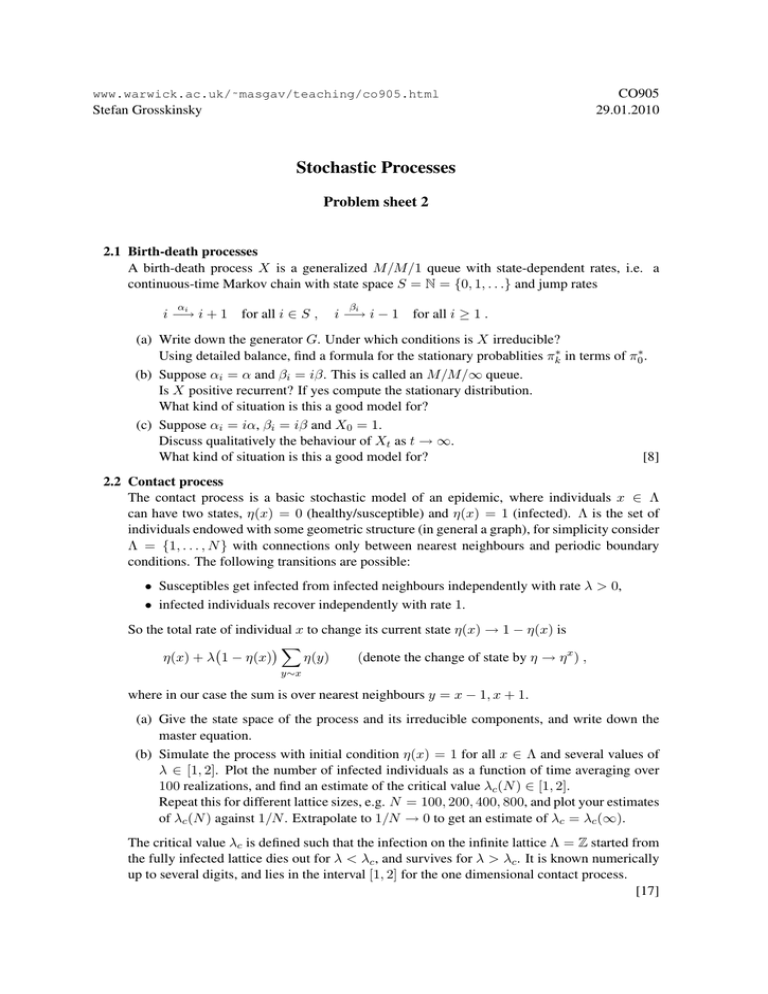
www.warwick.ac.uk/˜masgav/teaching/co905.html
Stefan Grosskinsky
CO905
29.01.2010
Stochastic Processes
Problem sheet 2
2.1 Birth-death processes
A birth-death process X is a generalized M/M/1 queue with state-dependent rates, i.e. a
continuous-time Markov chain with state space S = N = {0, 1, . . .} and jump rates
α
i
i −→
i+1
for all i ∈ S ,
βi
i −→ i − 1 for all i ≥ 1 .
(a) Write down the generator G. Under which conditions is X irreducible?
Using detailed balance, find a formula for the stationary probablities πk∗ in terms of π0∗ .
(b) Suppose αi = α and βi = iβ. This is called an M/M/∞ queue.
Is X positive recurrent? If yes compute the stationary distribution.
What kind of situation is this a good model for?
(c) Suppose αi = iα, βi = iβ and X0 = 1.
Discuss qualitatively the behaviour of Xt as t → ∞.
What kind of situation is this a good model for?
[8]
2.2 Contact process
The contact process is a basic stochastic model of an epidemic, where individuals x ∈ Λ
can have two states, η(x) = 0 (healthy/susceptible) and η(x) = 1 (infected). Λ is the set of
individuals endowed with some geometric structure (in general a graph), for simplicity consider
Λ = {1, . . . , N } with connections only between nearest neighbours and periodic boundary
conditions. The following transitions are possible:
• Susceptibles get infected from infected neighbours independently with rate λ > 0,
• infected individuals recover independently with rate 1.
So the total rate of individual x to change its current state η(x) → 1 − η(x) is
X
η(x) + λ 1 − η(x)
η(y)
(denote the change of state by η → η x ) ,
y∼x
where in our case the sum is over nearest neighbours y = x − 1, x + 1.
(a) Give the state space of the process and its irreducible components, and write down the
master equation.
(b) Simulate the process with initial condition η(x) = 1 for all x ∈ Λ and several values of
λ ∈ [1, 2]. Plot the number of infected individuals as a function of time averaging over
100 realizations, and find an estimate of the critical value λc (N ) ∈ [1, 2].
Repeat this for different lattice sizes, e.g. N = 100, 200, 400, 800, and plot your estimates
of λc (N ) against 1/N . Extrapolate to 1/N → 0 to get an estimate of λc = λc (∞).
The critical value λc is defined such that the infection on the infinite lattice Λ = Z started from
the fully infected lattice dies out for λ < λc , and survives for λ > λc . It is known numerically
up to several digits, and lies in the interval [1, 2] for the one dimensional contact process.
[17]


